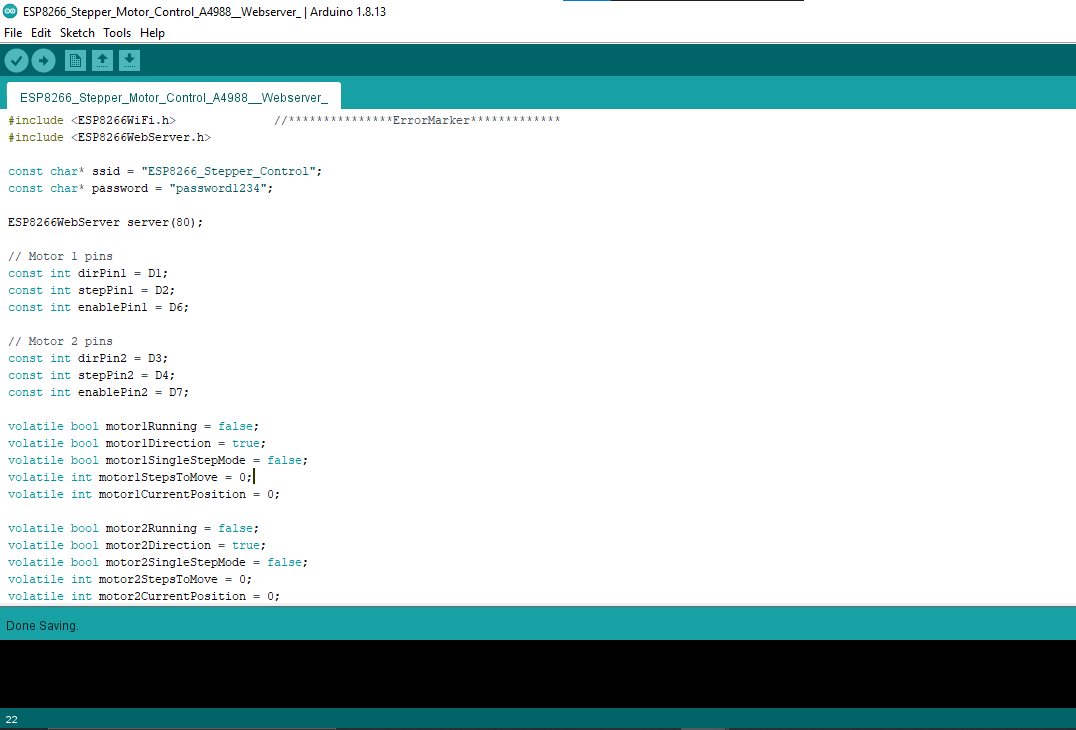ESP8266 Webserver Control Stepper Motor
by Amazing11 in Circuits > Arduino
1181 Views, 5 Favorites, 0 Comments
ESP8266 Webserver Control Stepper Motor


Hello everyone! In this video, we're going to make a very simple stepper motor controller using the ESP8266 NodeMCU microcontroller on a simple and user-friendly web server webpage, which is written in HTML, CSS, and a little bit of JavaScript. This will control and send commands to the Arduino C++ code, and you can use this webpage on your laptop, PC, smartphone, etc. You can create your own by simply following the steps given in this blog page. Writing the code for this project is a little bit challenging, but after lots of errors and testing in both the code and hardware, I successfully created this project. I'm excited to share this with you so you can also experience the satisfaction of building and controlling your own stepper motor. Don't forget to experiment and tweak the code to better suit your needs. Your support and feedback are crucial for me, so please like, share, and subscribe to my channel. Also, feel free to leave a comment if you have any questions or need further assistance.
Supplies
For this Project, You need to have these things :-
1x ESP8266 NodeMCU
2x A4988 Stepper Motor Driver with Heatsink
2x Nema 17 Steper Motor or any Bipolar Stepper Motor
Some Jumper Wire
1x 12V DC Power Supply
Circuit Diagram:-

This is not a big deal with Steppers and Microcontroller, Just a simple Circuit Diagram you can Solder or make it on breadboard. I mention Every details on my YouTube video. Please Check and if have problem comment it.
Code

You can copy the code from here in this site- ElecoTechoz and paste it into your Arduino IDE software. Make sure everything is properly connected to your laptop or computer.
After pasting the code, select the appropriate Port by navigating to Tools > Port, and choose the correct Board type from Tools > Board to match your Arduino model. Verify the code by clicking on the checkmark icon to ensure there are no errors. Once verified, click the upload button to transfer the code to your Arduino. If you encounter any issues, double-check your wiring and connections. Make sure your USB cable is securely connected. Finally, observe the results as your Arduino executes the uploaded code.
Completed
After Uploading the Code check everything twice in breadboard that every connection is connected in proper way… otherwise you may be burn or lose your microcontroller by applying 12V directly on it and also check whether A4988 is also connected in proper way make sure 3.3V to 3.3V and GND to GND. After Complete check-up you can now use this project by smartphone or Laptop etc. If want to add more feature on this webpage you can feel free to comment on my YouTube Video for this topic and also here.